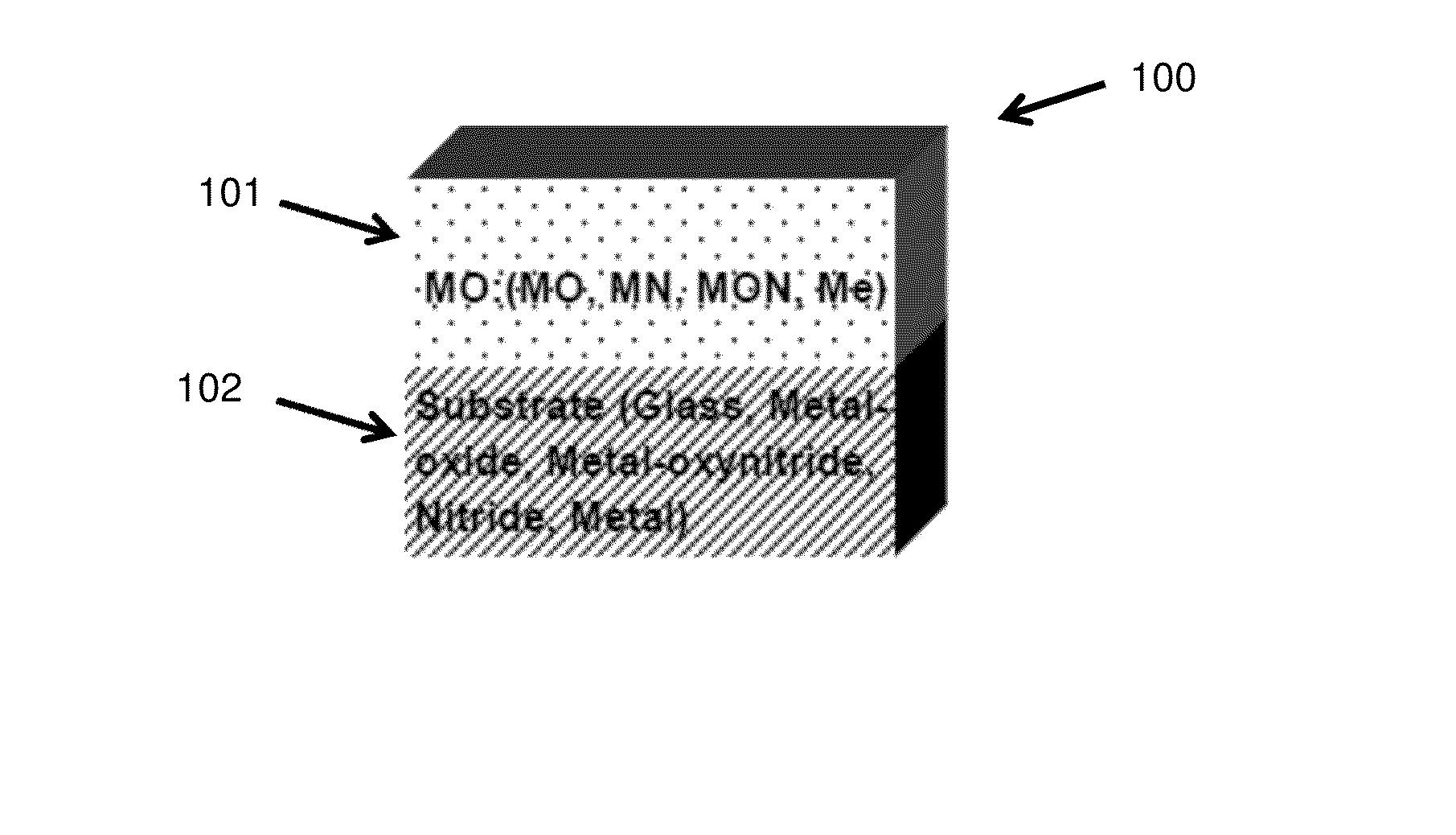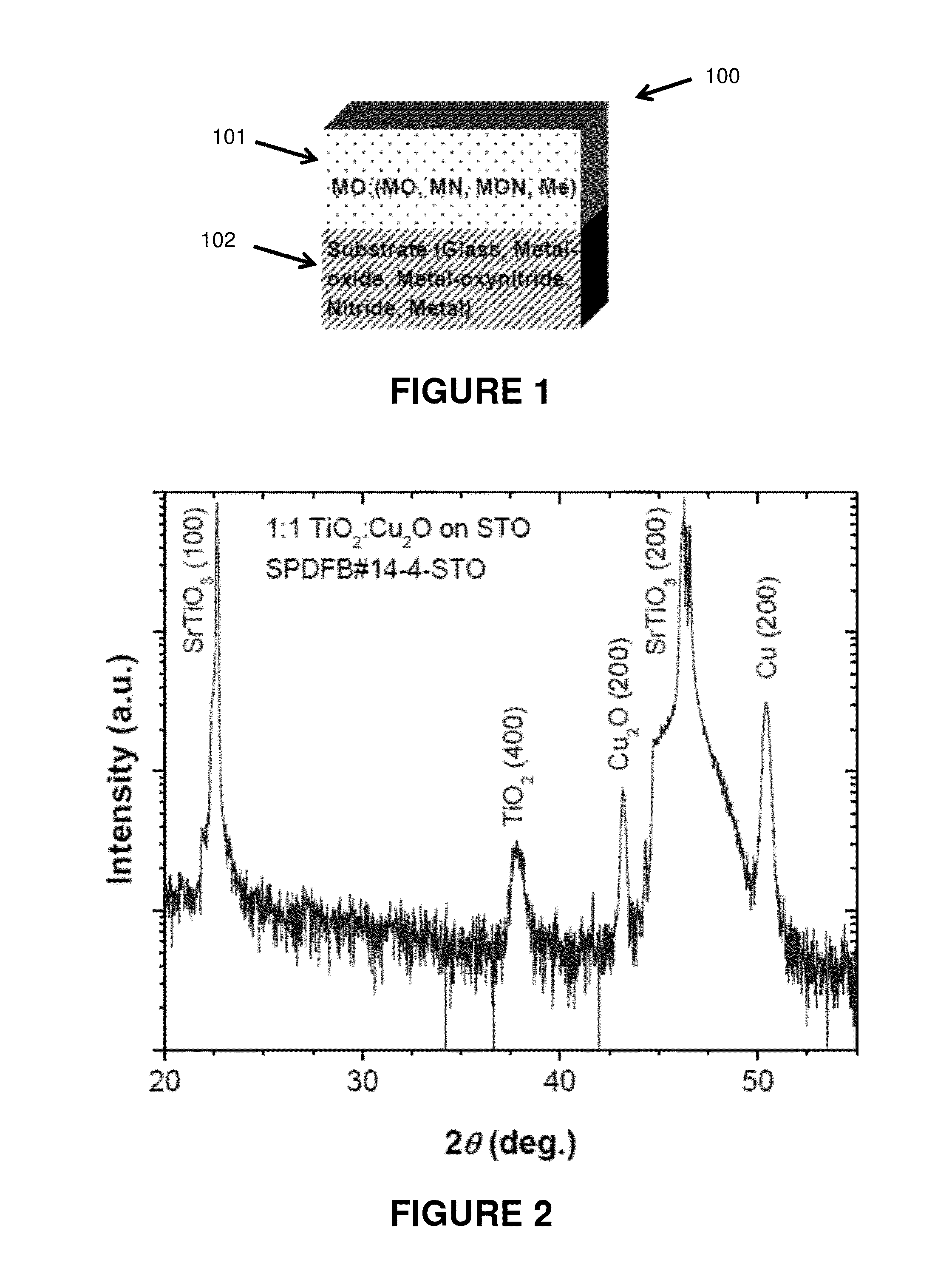Superhydrophobic films and methods for making superhydrophobic films
- Summary
- Abstract
- Description
- Claims
- Application Information
AI Technical Summary
Benefits of technology
Problems solved by technology
Method used
Image
Examples
embodiment
Method Embodiment
[0037]Various embodiments relate to methods of making a superhydrophobic film, which can include depositing a first component and a second component to form a film including a plurality of nanostructures, and coating the nanostructures with a hydrophobic layer to render the film superhydrophobic.
First and Second Components
[0038]The first component and the second component can be immiscible and phase-separated during the depositing step. The first component and the second component can be independently selected from the group consisting of a metal oxide, a metal nitride, a metal oxynitride, a metal, and combinations thereof.
[0039]As stated above, the first component and the second component can be independently selected from a group including a metal oxide. The metal oxide can be selected from the group consisting of SiO2, CuxOy, ZnO, MgO, SnO2, TixOy, (RE)MnO3, Bi2O3, ZnMn2O4, Fe2O3, WO3, Al2O3, BaxNbyOz, BaxTayOz, BaxSnyOz, BaxAlyOz, CoFeO3, CoTiO3, BiFeO3, BaTiO3,...
example 1
[0101]This example demonstrates the creation of thin films comprising a chemically phase-segregated TiO2 and Cu2O composite nanostructures using RF magnetron sputtering onto single crystal substrates (e.g., SrTiO3 and LaAlO3). The sputter targets were prepared from a mixture of 50 mol % TiO2 (anatase) and 50 mol % Cu2O powders, which were packed into 2 inch diameter copper trays. To generate a superhydrophobic surface, the phase separated nanostructured film is coated with a chemically hydrophobic self-assembled-monolayer (SAM) such as a fluorocarbon or hydrophobic fatty acid. The specific hydrophobic layer employed was a 1,1,2,2-Tetrahydroperfluorooctyl)trichlorosilane).
[0102]FIG. 2 shows an X-ray Diffraction (XRD) pattern of a TiO2—Cu2O composite film deposited on SrTiO3 (001) substrate, revealing phase separation of TiO2 and Cu2O phases. It is also evident that the conditions employed during the sputter deposition are favorable for partial reduction of Cu2O to metallic Cu phase.
[...
example 2
[0112]This example demonstrates the creation of thin films comprising a chemically phase-segregated TiO2 and Cu2O composite nanostructures using RF magnetron sputtering onto biaxially textured metal templates (e.g., Cu). To generate a superhydrophobic surface, the phase separated nanostructured film is coated with a chemically hydrophobic self-assembled-monolayer (SAM) such as a fluorocarbon or hydrophobic fatty acid. The specific hydrophobic layer used comprised tridecafluoro-1,1,2,2-tetrahydroctyltriclorosilane. 1 volume % of tridecafluoro-1,1,2,2-tetrahydroctyltriclorosilane was mixed with hexane and the sample was dipped in the solution for 15 minutes, then heat treated (baked in a furnace) for 15 minutes.
[0113]As shown in FIG. 5(a) and FIG. 5(b), compared to single crystal substrate surface morphology, presented in FIG. 2b, similar surface features are can be established on metal templates according to various embodiments of the invention. Superhydrophobic properties of the com...
PUM
| Property | Measurement | Unit |
|---|---|---|
| Length | aaaaa | aaaaa |
| Fraction | aaaaa | aaaaa |
| Thickness | aaaaa | aaaaa |
Abstract
Description
Claims
Application Information
 Login to View More
Login to View More - R&D
- Intellectual Property
- Life Sciences
- Materials
- Tech Scout
- Unparalleled Data Quality
- Higher Quality Content
- 60% Fewer Hallucinations
Browse by: Latest US Patents, China's latest patents, Technical Efficacy Thesaurus, Application Domain, Technology Topic, Popular Technical Reports.
© 2025 PatSnap. All rights reserved.Legal|Privacy policy|Modern Slavery Act Transparency Statement|Sitemap|About US| Contact US: help@patsnap.com



